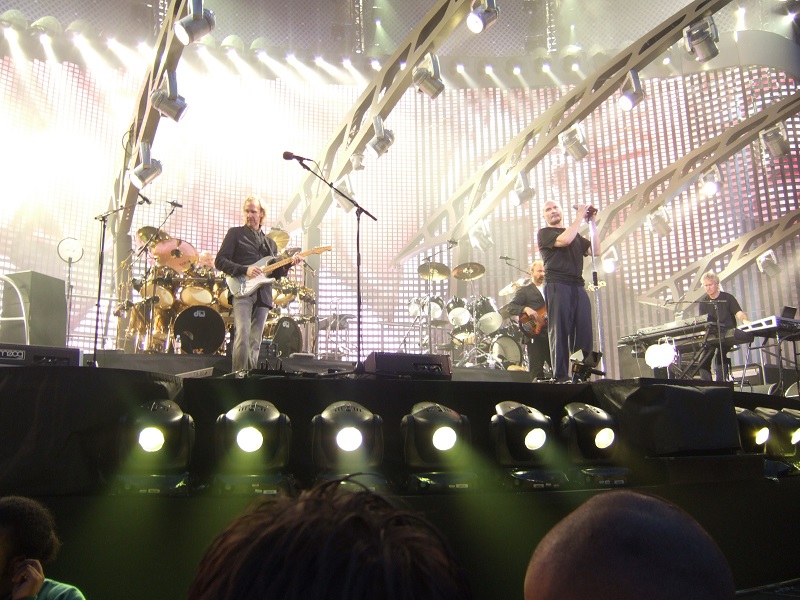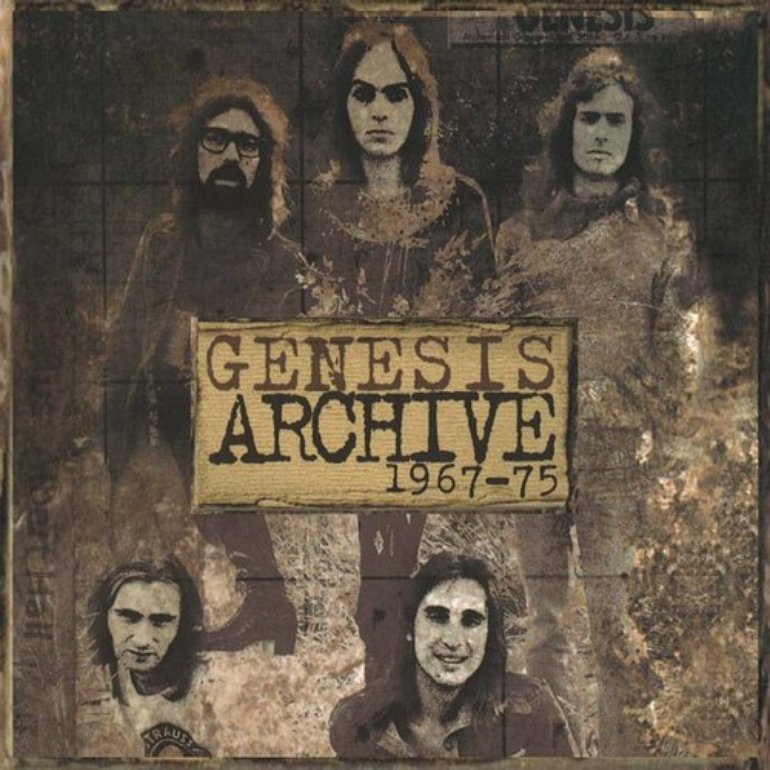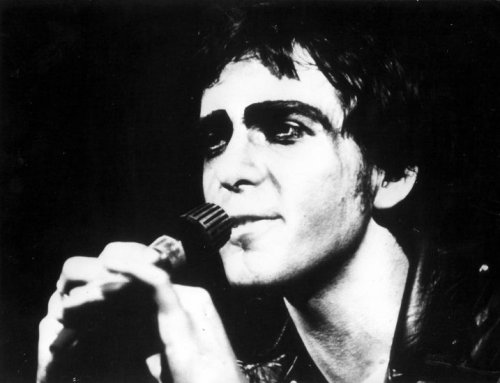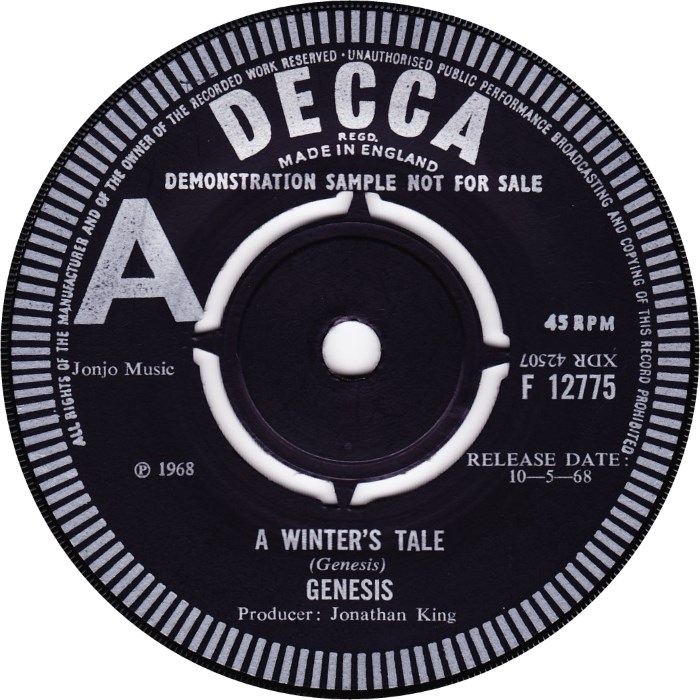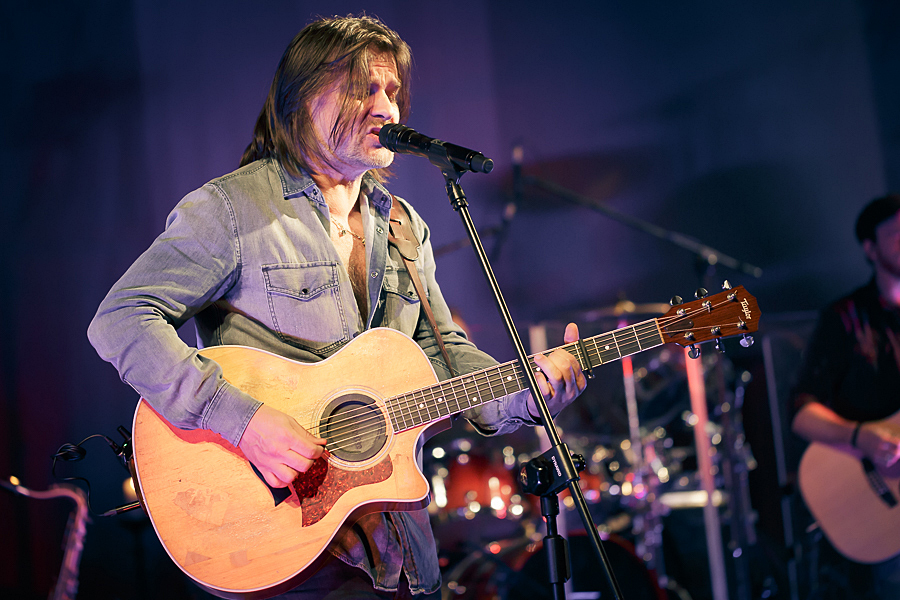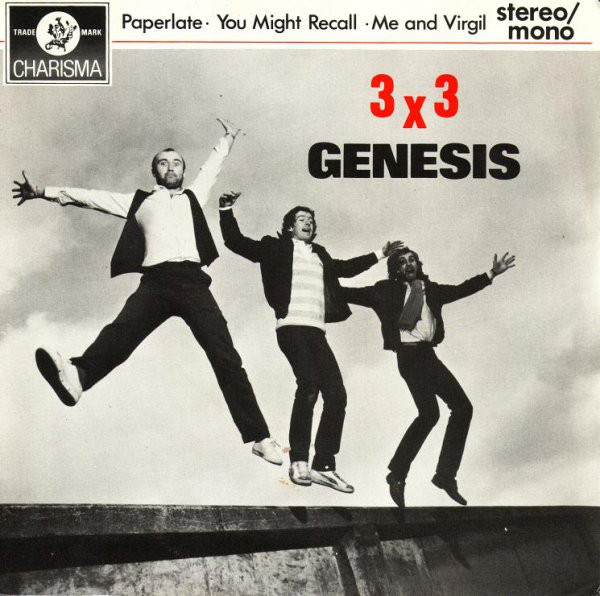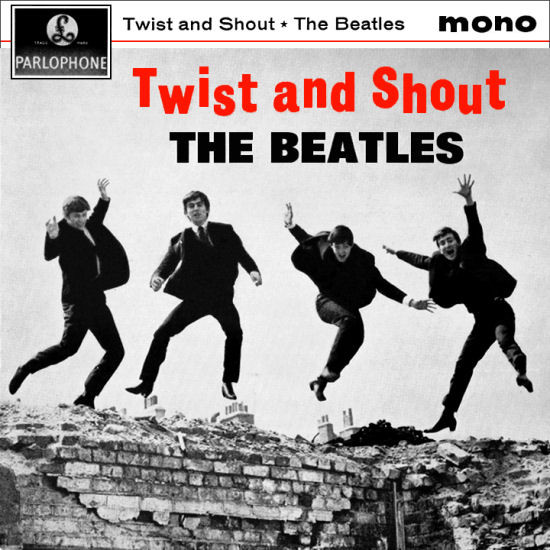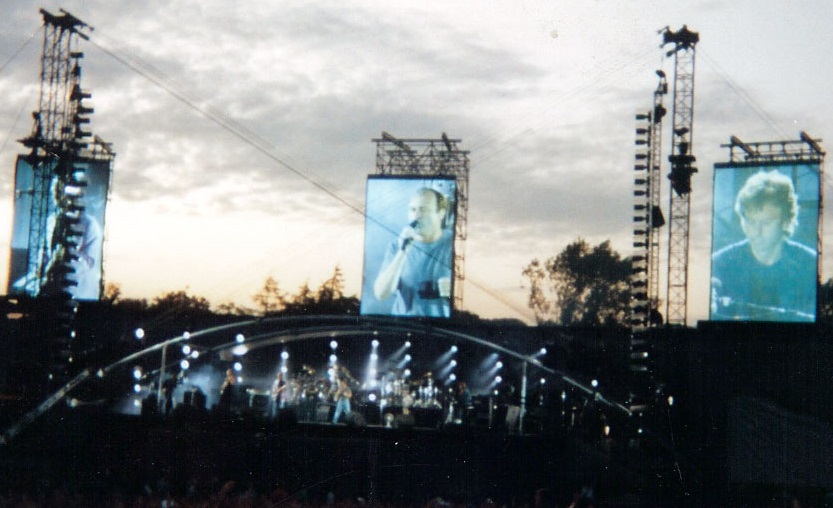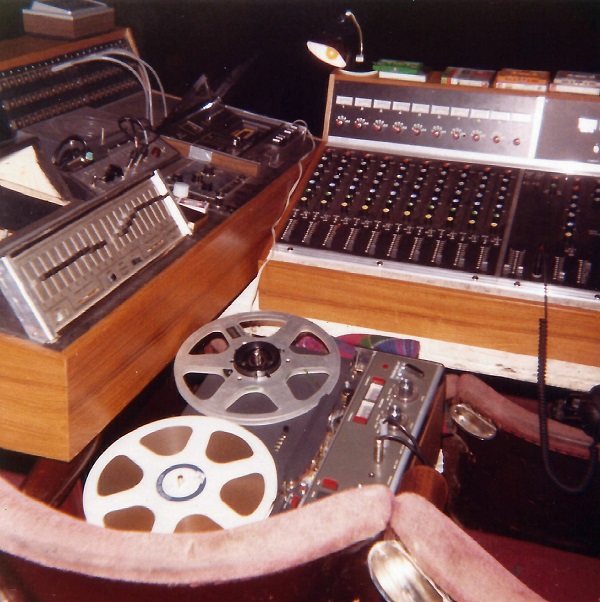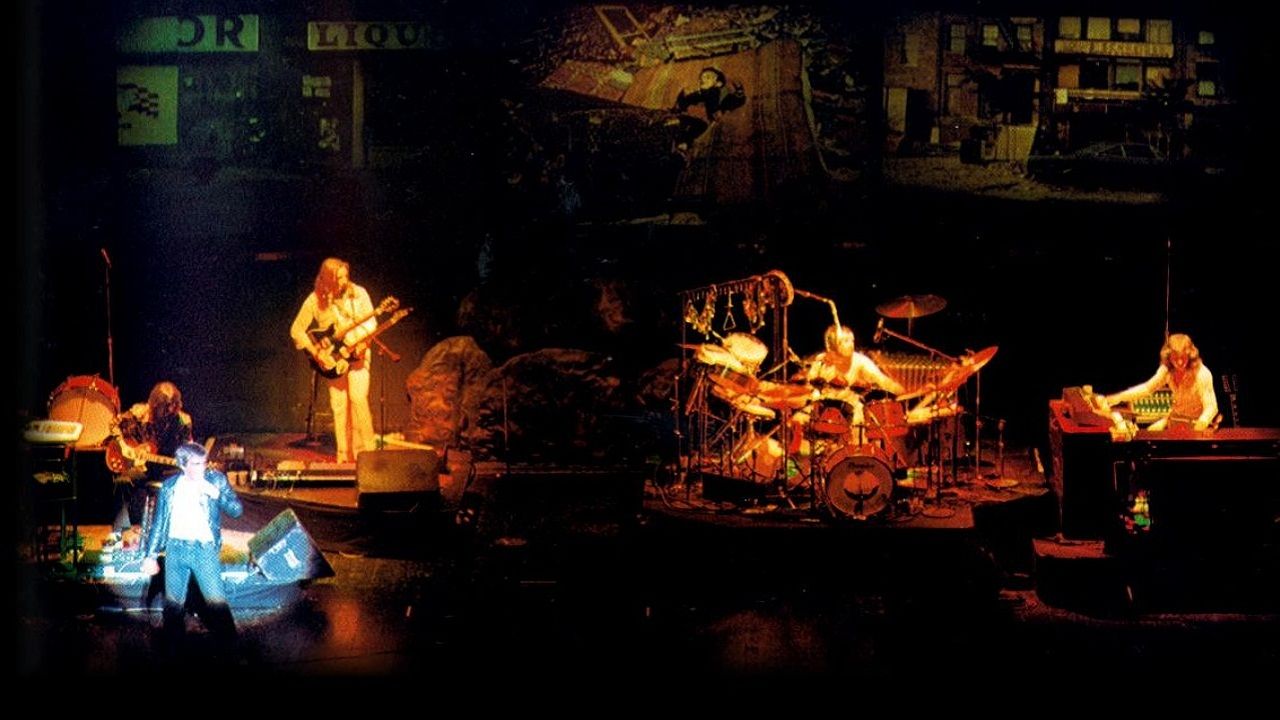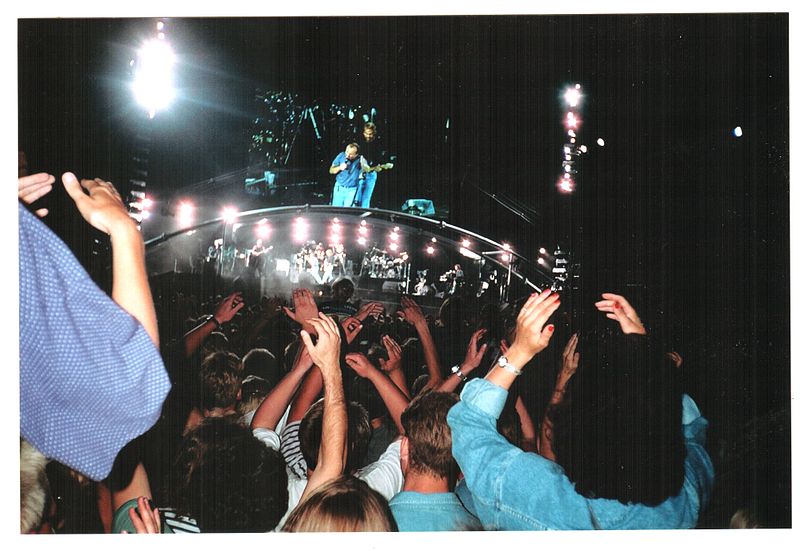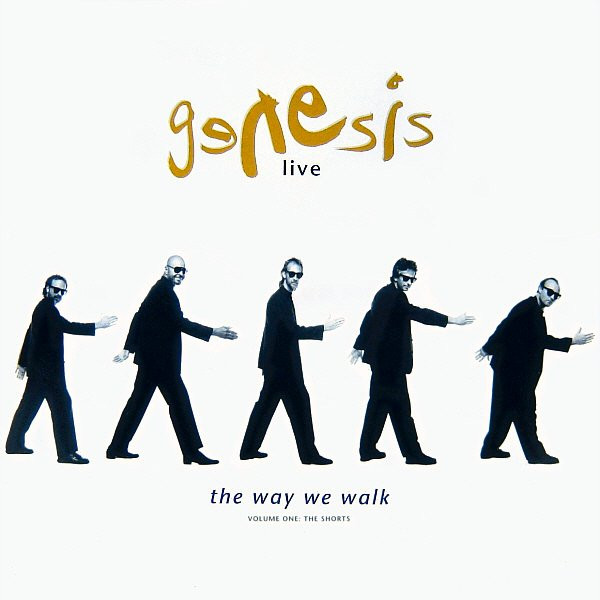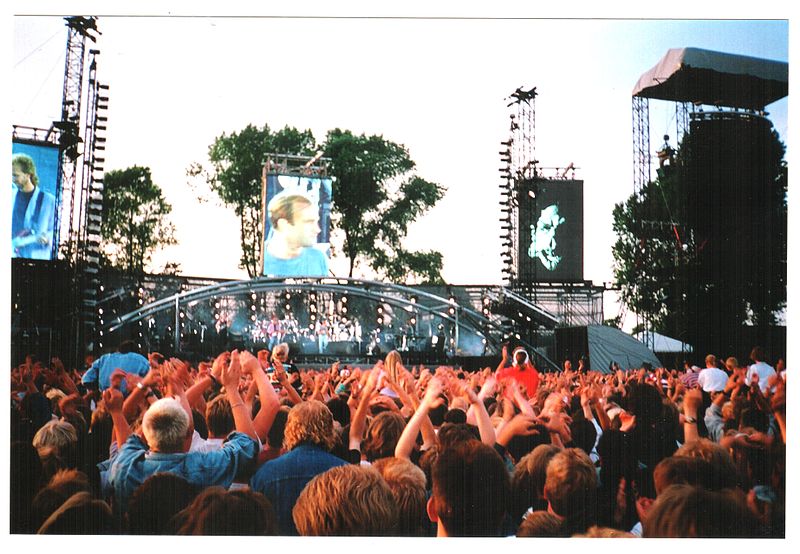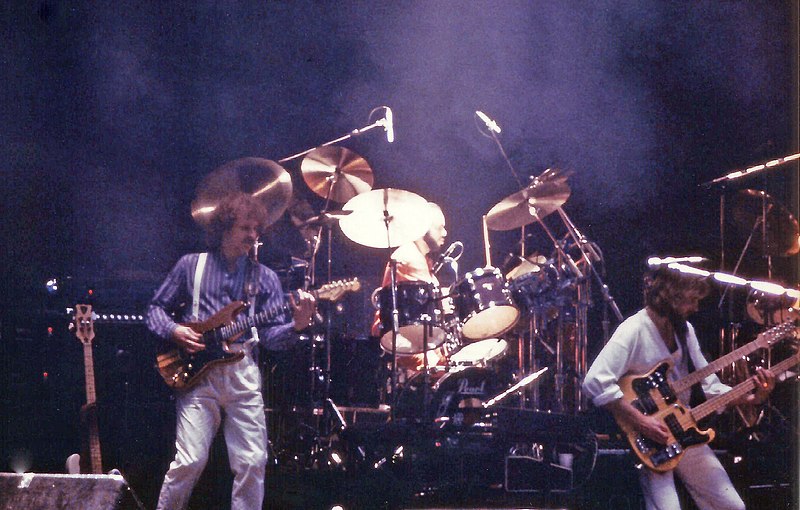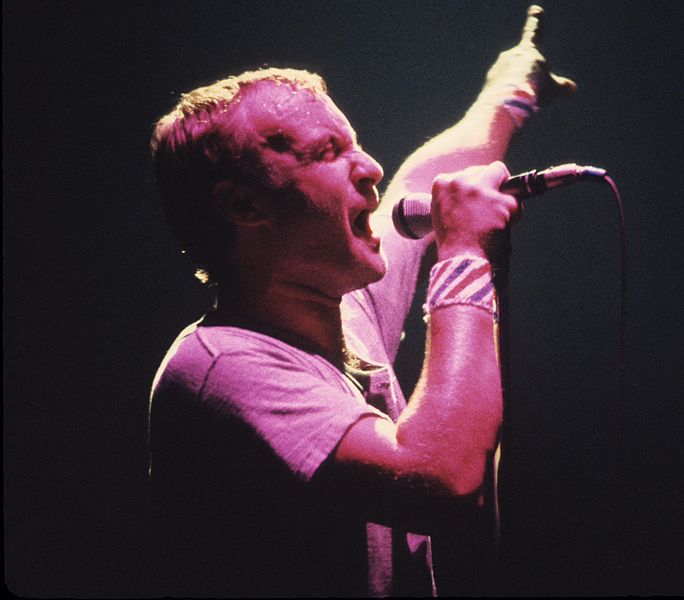Genesis played their first-ever overseas concert on March 7, 1971, at La Ferme in Woluwe St. Lambert, Belgium. This landmark performance marked a significant step in the band’s journey, as they ventured beyond the UK for the first time.
Trespass Had Charted in Belgium
At the start of 1971, Genesis had yet to achieve major success in their home country. However, things were different on the continent: their second album, Trespass, had reached number one in Belgium. Encouraged by this unexpected success, the band – now featuring new members Phil Collins on drums and Steve Hackett on guitar – headed to Belgium for their first international show.
A Rough Journey Across the Channel
The band crossed the English Channel on an overnight ferry, but sleep was out of the question. Unable to afford cabins, they spent the night sitting on deck – while Phil, suffering from seasickness, spent most of it throwing up. Running on little more than beer and sandwiches, they arrived in Belgium the next morning, drove straight to the venue, and played.
The Setlist: A Mix of Old and New
The setlist featured songs from Trespass, live favorites, and two brand-new tracks. As was typical for Genesis at the time, the performance started with acoustic material before building up to heavier numbers. Fortunately, a recording of this historic gig exists, allowing us to hear most of the show (though some parts are missing). It also contains the only known live recording of the rare song “The Light”, which features early elements that would later evolve into The Lamb Lies Down on Broadway’s “Lilywhite Lilith.”
Opening with a New Song
The show began with the band’s latest composition, “Happy The Man” – introduced by Peter Gabriel as a song about a man who “eats his fingernails, probably.” Built around a Mike Rutherford riff, the song had a laid-back, folk-rock feel, reminiscent of Lindisfarne. It was an attempt at a radio-friendly single, and in this live version, it was performed at a slightly slower tempo.
Next came “Stagnation” from Trespass – which Gabriel jokingly described as being about “people with bad breath.” This live rendition, enhanced by Phil Collins’ drumming, had a swing that was missing from the studio version.
The Only Recorded Performance of “The Light”
After a few minutes of Peter’s humorous attempts to introduce the band, they launched into “The Light” – a rarity in Genesis’ catalog. The song’s opening bass riff would later be repurposed for “Lilywhite Lilith”, and Steve Hackett’s guitar parts would also find their way into that track. “The Light” then developed into a full-fledged progressive rock piece, featuring an extended instrumental jam between Tony Banks and Hackett. Eventually, the song returned to a section that closely resembled the later Lamb Lies Down classic. Compared to other Genesis compositions from this era, “The Light” stands out as a unique and intriguing experiment.
A Blend of Familiar and Unfinished Material
Next, the band slowed things down with “Twilight Alehouse”, a live staple at the time. The dramatic organ-driven climax showcased Tony Banks’ signature style. Then came another brand-new song: “The Musical Box”, which Peter introduced in both English and French. This early version was slightly different from the one that would appear on Nursery Cryme later that year. There was extra instrumental material before the “And the clock” section, which was repeated twice. Tony’s keyboard solo was extended, while Steve Hackett’s was shorter – unsurprising, as he had only been with the band for two months. Even the song’s now-iconic climax had subtle differences in Gabriel’s vocal delivery.
The band then launched into the Trespass classic “The Knife”, which Peter introduced in French. Tony’s organ led the charge, Mike Rutherford’s bass provided the driving force, and Steve Hackett – though still getting to grips with the song’s solos – delivered a strong performance by the end. Unfortunately, Peter’s flute section in the middle is missing from the recording. The audience, however, responded with enthusiasm, applauding loudly.
For the encore, Genesis performed “Going Out to Get You”, an early track that Peter described as “a very old number about passion.” Tony Banks dominated the piece, and Steve Hackett was barely audible – at times, it even seemed as if he wasn’t playing at all.
A Glimpse Into Genesis’ Creative Process
Listening to this rare recording is fascinating – not just because it includes unreleased songs, but also because it captures the band in the midst of developing their material, both musically and lyrically. Most notably, it features the only known live performance of “The Light”, making it an essential piece of Genesis history.
An Exhausting but Pivotal Moment
The concert was a success and a crucial milestone for Genesis. After the show, the exhausted band made their way back to the UK on the ferry, with Phil Collins limping home, nearly collapsing from sheer fatigue. Despite the rough journey, this first step into the international spotlight marked the beginning of Genesis’ rise as one of progressive rock’s most important bands.
Photo: FOH PA mixing desk and associated gear for Genesis at a concert in the Liverpool Empire, 1970s, precise year unknown. Source: Wikimedia Commons, Rodhullandemu / CC-BY-SA-2.5 (https://creativecommons.org/licenses/by/3.0).


